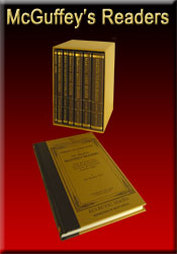What are the McGuffey Readers?
Original |
Guide to the McGuffey Readers, written by Sherry Hayes: This valuable guide to the McGuffey Readers was written by a home school mom of 15 children and includes the history and philosophy of the McGuffey Readers along with some practical helps and charts. Click on link for a pdf copy of the guide.
|


